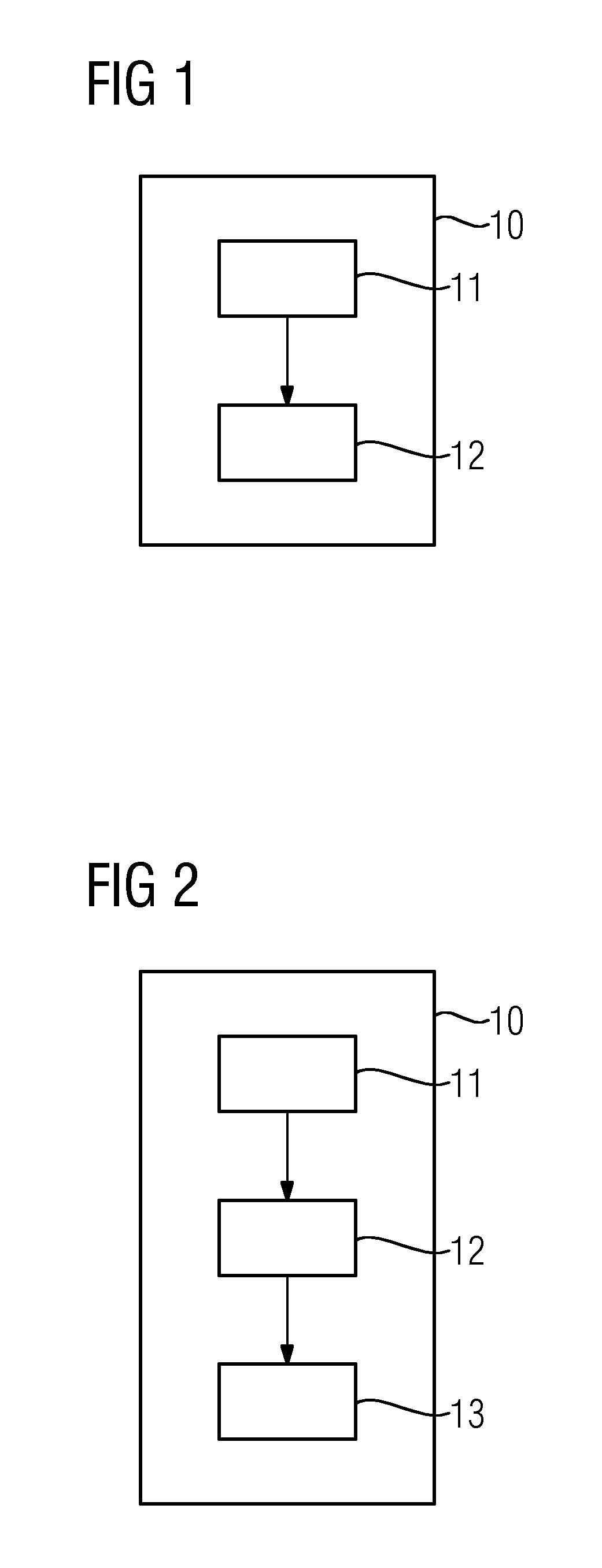Controller and Method for Controlling Communication Services for Applications on a Physical Network
- Summary
- Abstract
- Description
- Claims
- Application Information
AI Technical Summary
Benefits of technology
Problems solved by technology
Method used
Image
Examples
first embodiment
[0067]FIG. 1 shows a schematic block diagram of a controller 10 for controlling communication services for a plurality N of applications 21, 22 on a physical network 30 having a plurality M of network nodes 41-49 providing certain network resources. Each of the N applications 21, 22 is described by a set of requirements and is configured to run on at least two of the M network nodes 41-49. In the following, the controller 10 of FIG. 1 is discussed with reference to FIGS. 3 to 5. In this regard, FIG. 5 shows an embodiment of a physical network 30, FIG. 4 a network model 50 of the physical network 30 of FIG. 5, and FIG. 3 shows two exemplary applications 21, 22 that are to be implemented in the physical network of FIG. 5.
[0068]With respect to FIG. 3, and without loss of generality, N=2 in this example. Further, with reference to FIGS. 4 and 5, M=9 without loss of generality.
[0069]FIG. 3 shows two applications 21, 22, where the first application 21 has four end devices 41-44 between wh...
third embodiment
[0079]Moreover, the requestor 15 is configured to request network information on the network resources from the physical network 30 and node information on the node capabilities and the node resources from the network nodes 41-49. In this third embodiment, the generator 30 may be configured to generate the network model 50 based on the network information and the node information as requested by the requestor 15.
[0080]FIG. 7 shows a method for controlling communication services for a plurality N of applications 21, 22 on the physical network 30 having a plurality M of network nodes 41-49 providing certain network resources. Each of the N applications 21, 22 is described by a set of requirements and is configured to run on at least two of the M network nodes 41-49.
[0081]The method of FIG. 7 includes the following steps 101-103:
[0082]In step 101, a network model 50 of the physical network 30 is generated. The network model 50 includes a topology 60 of the physical network 30 and a nod...
PUM
 Login to View More
Login to View More Abstract
Description
Claims
Application Information
 Login to View More
Login to View More - R&D
- Intellectual Property
- Life Sciences
- Materials
- Tech Scout
- Unparalleled Data Quality
- Higher Quality Content
- 60% Fewer Hallucinations
Browse by: Latest US Patents, China's latest patents, Technical Efficacy Thesaurus, Application Domain, Technology Topic, Popular Technical Reports.
© 2025 PatSnap. All rights reserved.Legal|Privacy policy|Modern Slavery Act Transparency Statement|Sitemap|About US| Contact US: help@patsnap.com



